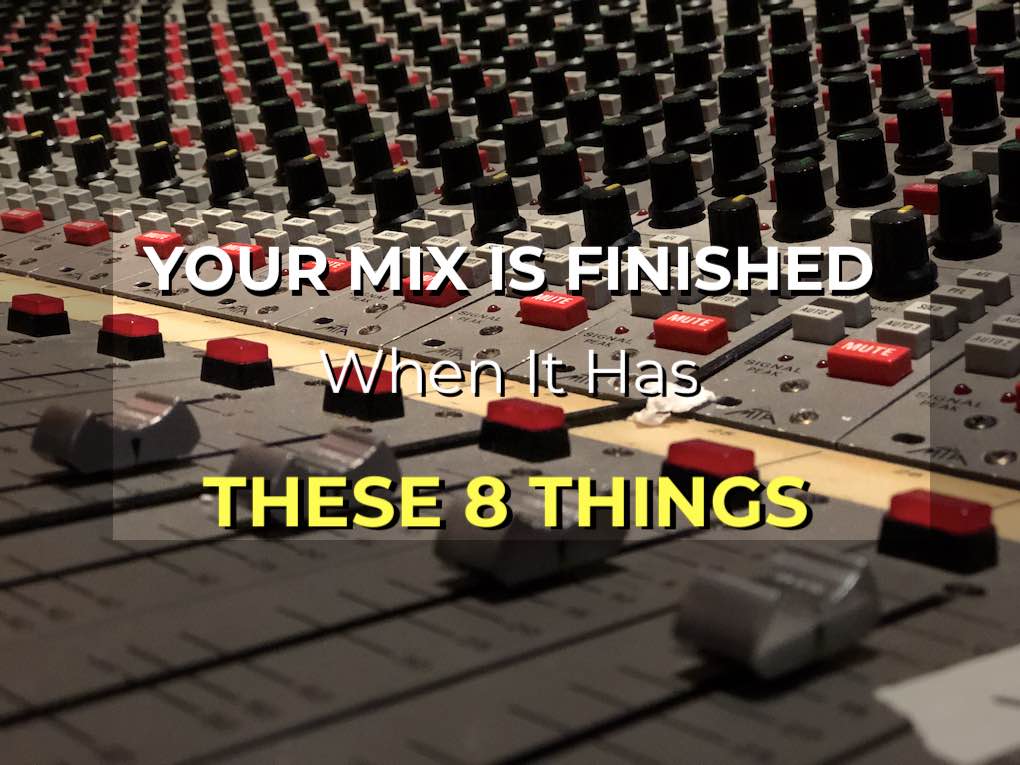- in Book Excerpt , Engineering , Production by Bobby Owsinski
You Know Your Mix Is Finished When It Has These 8 Things
One of the hardest things for many mixers to determine is when a mix is finished. In fact, engineers new to mixing may think a mix is ready in an hour, but a pro will usually take considerably longer in most cases. How much longer? Well, some big hit maker mixers that I know may spend up to 16 hours just on a vocal!

That said, the time spent on a mix is all over the place these days, so this excerpt from the 5th edition of my Mixing Engineer’s Handbook outlines 8 things that will let you know when your mix is ready for the world.
“One of the tougher things to decide when you’re mixing is when the mix is finished. If you have a deadline, the decision is made for you as the clock ticks down, but if you have unlimited time or a deep-pocket budget, a mix can drag on forever.
Just when is a mix considered finished? Here are some guidelines:
1. The groove of the song is solid. The pulse of the song is strong and undeniable.
2. You can distinctly hear every mix element. Although some mix elements, such as pads, are sometimes meant to blend seamlessly into the track, most mix elements should be clearly heard.
3. Every lyric and every note of every line or solo can be heard. You don’t want a single note buried. It all has to be crystal clear. Use your automation. That’s what it was made for.
4. The mix has punch. The relationship between the bass and drums is in the right proportion and works well together to give the song a solid foundation.
5. The mix has a focal point. What’s the most important element of the song? Make sure it’s obvious to the listener.
6. The mix has contrast. If you have too much of the same effect on everything, the mix can sound washed out. Likewise, if your mix has the same intensity throughout, it can be boring to the listener. You need to have contrast between different elements, from dry to wet, from intense to less intense, to give the mix depth.
7. All noises and glitches are eliminated. This includes any count-offs, singer’s breaths that seem out of place or predominant because of vocal compression, amp noise on guitar tracks before and after the guitar is playing, bad-sounding edits, and anything else that might take the listener’s attention away from the track.
8. You can play your mix against songs that you love, and it holds up. This is perhaps the ultimate test. If you can get your mix in the same ballpark as many of your favorites (either things you’ve mixed or mixes from other artists) after you’ve passed the previous seven items, then you’re probably home free.
How Long Should It Take?
How much time should all this take? In the end, most mixing pros figure at least a full 8 to 12 hour day per song regardless of whether you’re mixing in the box or mixing on an analog console (this may be over several days), although it’s still best to figure a day and a half per mix if you’re mixing in a studio with an analog-style console and traditional hardware outboard gear.
On the other hand, Nashville-based hit mixer Billy Decker can do it in 45 minutes with his template mixing technique. Of course, if you’re mixing every session in your DAW as you go along during recording, then you might be finished before you know it, since all you may have to do is just tweak your mix a little to call it complete.”
You can read more from The Mixing Engineer’s Handbook and my other books on the excerpt section of bobbyowsinski.com.

